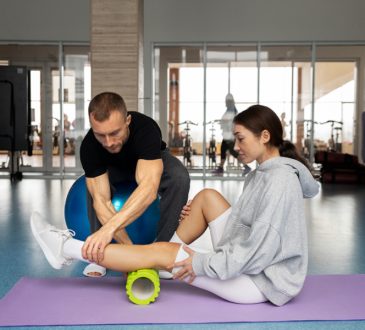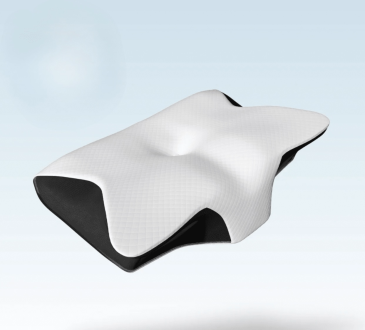
Aging brings physical changes that can affect mobility, balance, and independence. Muscles weaken, joints become stiffer, and reflexes slow down. These changes make everyday tasks more difficult and increase the risk of falls and injury. Physical therapy for seniors is an essential component of healthy aging, offering tailored strategies to help older adults maintain function and regain strength after illness or injury. Rather than focusing on limitation, it emphasizes possibility through movement and guided care.
Improving Mobility and Function through Personalized Plans
Mobility is often the first area affected as people age. Walking, standing from a chair, climbing stairs, and even getting out of bed can become challenging over time. These difficulties do not arise overnight, but the gradual decline can go unnoticed until it begins to interfere with daily life. Physical therapy for seniors is designed to counteract that decline through personalized plans that strengthen key muscle groups, improve joint flexibility, and rebuild confidence in movement.
A physical therapist begins by assessing the senior’s current mobility, range of motion, muscle strength, and coordination. This evaluation includes questions about lifestyle, pain, and specific difficulties the patient is facing. The goal is to create a treatment plan that is realistic and achievable. Exercises might include leg raises, heel slides, ankle rotations, or balance drills, all tailored to the individual’s condition. These small, repetitive movements gradually rebuild the body’s ability to support itself.
Physical therapy for seniors often incorporates assistive tools such as resistance bands, walkers, or supportive footwear to ensure safety during exercises. Some may benefit from aquatic therapy, where the water’s buoyancy reduces stress on joints while allowing full-range motion. Others may work on transfer techniques to safely move from bed to chair or in and out of vehicles. Every session builds on the last, creating a structured pathway toward greater independence and comfort.
Mobility isn’t just about walking—it’s about living. Physical therapy aims to help seniors participate in activities they love, whether that’s gardening, walking a pet, or playing with grandchildren. Restoring that capacity means restoring a part of their identity. Movement becomes a tool for reclaiming joy and dignity in everyday routines.
Reducing the Risk of Falls and Preventing Injuries
Falls are one of the most serious threats to senior health. Every year, millions of older adults are hospitalized because of fall-related injuries. Broken hips, head trauma, and spinal injuries can have life-altering consequences. These incidents can also lead to fear of falling again, which causes further inactivity and weakening. Physical therapy for seniors tackles this cycle by addressing the root causes of instability before accidents occur.
A significant part of fall prevention includes improving balance and coordination. Therapists use standing exercises, tandem walking, and stepping drills to help seniors develop better postural awareness. These activities challenge the vestibular and proprioceptive systems, training the body to respond more quickly and steadily. Practicing these movements in a controlled setting prepares the body to react safely when real-life situations occur, like tripping over a rug or losing balance on stairs.
Another vital element is strengthening the lower body. Weak leg muscles are a primary contributor to unsteady gait and reduced reaction time. Through repetitive weight-bearing movements, seniors gradually regain the strength needed to maintain control of their movements. Therapists often focus on muscle groups such as the quadriceps, glutes, calves, and hip flexors to build a more stable foundation.
Beyond exercises, physical therapy for seniors also involves education about the environment. Removing home hazards, such as loose rugs or poor lighting, can make a tremendous difference. Teaching seniors how to navigate their homes safely, use grab bars, and avoid risky behaviors is part of a comprehensive strategy. The goal is not just to heal but to empower. With the right preparation, falls can be minimized, and older adults can continue enjoying daily life without fear or restriction.
Preventing injuries through physical therapy extends into other areas, too. Seniors recovering from strokes, joint replacements, or surgeries need specialized plans to regain control and reduce the risk of setbacks. These plans promote healing, improve circulation, and ensure that each movement supports the body’s recovery rather than strains it. This type of therapy is proactive, building defenses against the physical setbacks often associated with aging.
Managing Chronic Pain and Supporting Long-Term Wellness
Pain management is another area where physical therapy for seniors makes a profound impact. Conditions like arthritis, osteoporosis, spinal stenosis, and neuropathy can make even simple movements feel unbearable. Relying solely on medications may not always provide relief and can introduce side effects or risks of dependency. Physical therapy offers an alternative path by targeting the physical causes of discomfort and teaching the body how to function more efficiently.
Chronic pain often leads to compensatory habits, where individuals alter their posture or gait to reduce discomfort. Over time, these patterns cause imbalances that strain other parts of the body. A physical therapist identifies these habits and works to correct them. Simple adjustments to movement, alignment, and muscle use can significantly reduce the stress placed on joints and soft tissues.
Manual therapy techniques, such as joint mobilization or soft tissue massage, can also provide immediate relief by releasing tension and increasing blood flow. When used in conjunction with guided exercise and stretching, these methods create a well-rounded approach to long-term pain control. Many seniors report improved sleep, increased energy, and reduced reliance on medication after regular therapy sessions.
Physical therapy for seniors also emphasizes breathing techniques, posture awareness, and relaxation strategies. These may seem secondary but play a critical role in pain management. When the body is aligned and supported correctly, muscles and joints operate with less resistance, which reduces strain and inflammation. Over time, a consistent therapy routine can help seniors manage chronic conditions with greater comfort and less interference in daily life.
Promoting overall wellness means encouraging movement as a daily habit, not just something to do during appointments. Therapists often provide home programs to continue progress between visits. These programs give seniors the tools to take control of their health and actively participate in maintaining their well-being. Wellness becomes a continuous journey, rather than a passive process.
The Emotional and Social Benefits of Therapy
Physical therapy for seniors doesn’t only impact the body. It also fosters a sense of connection and emotional uplift. Many older adults face isolation, especially after illness, injury, or loss of mobility. Therapy sessions provide not only structured activity but also meaningful interaction with someone who listens, encourages, and supports progress.
Confidence often grows as strength returns. Older adults who once feared falling or being dependent begin to rediscover trust in their bodies. This restored self-belief can lead to more engagement with community activities, family events, and hobbies that had been put on hold. Physical therapy often acts as the bridge between healing and re-entry into the rhythms of life.
For families, watching a loved one improve brings peace of mind. Knowing that there is a professional guiding the recovery and supporting functional goals relieves the burden of caregiving. Seniors who receive consistent therapy are less likely to be readmitted to hospitals or long-term care facilities, which supports not only their independence but also the family’s long-term plans.





